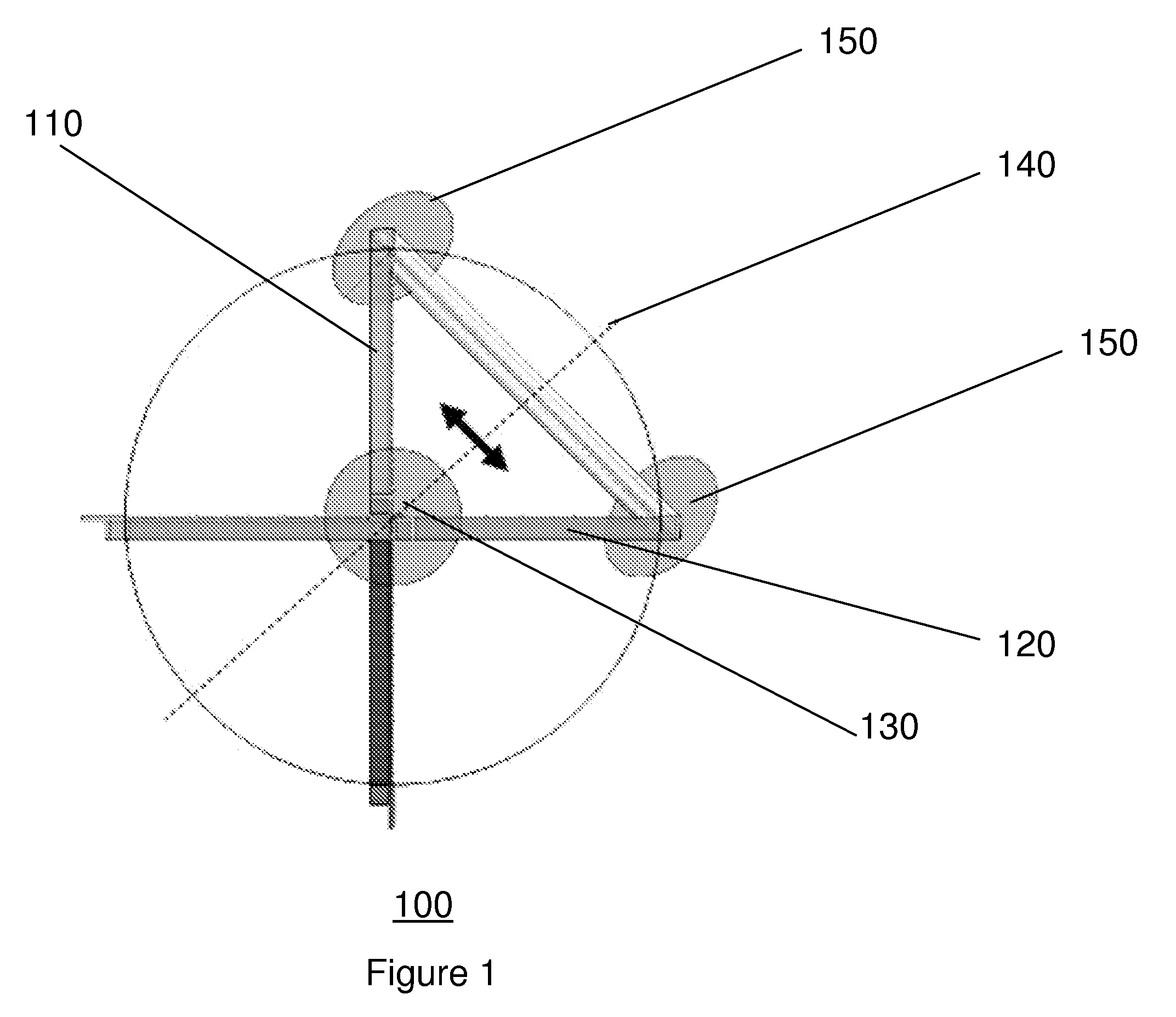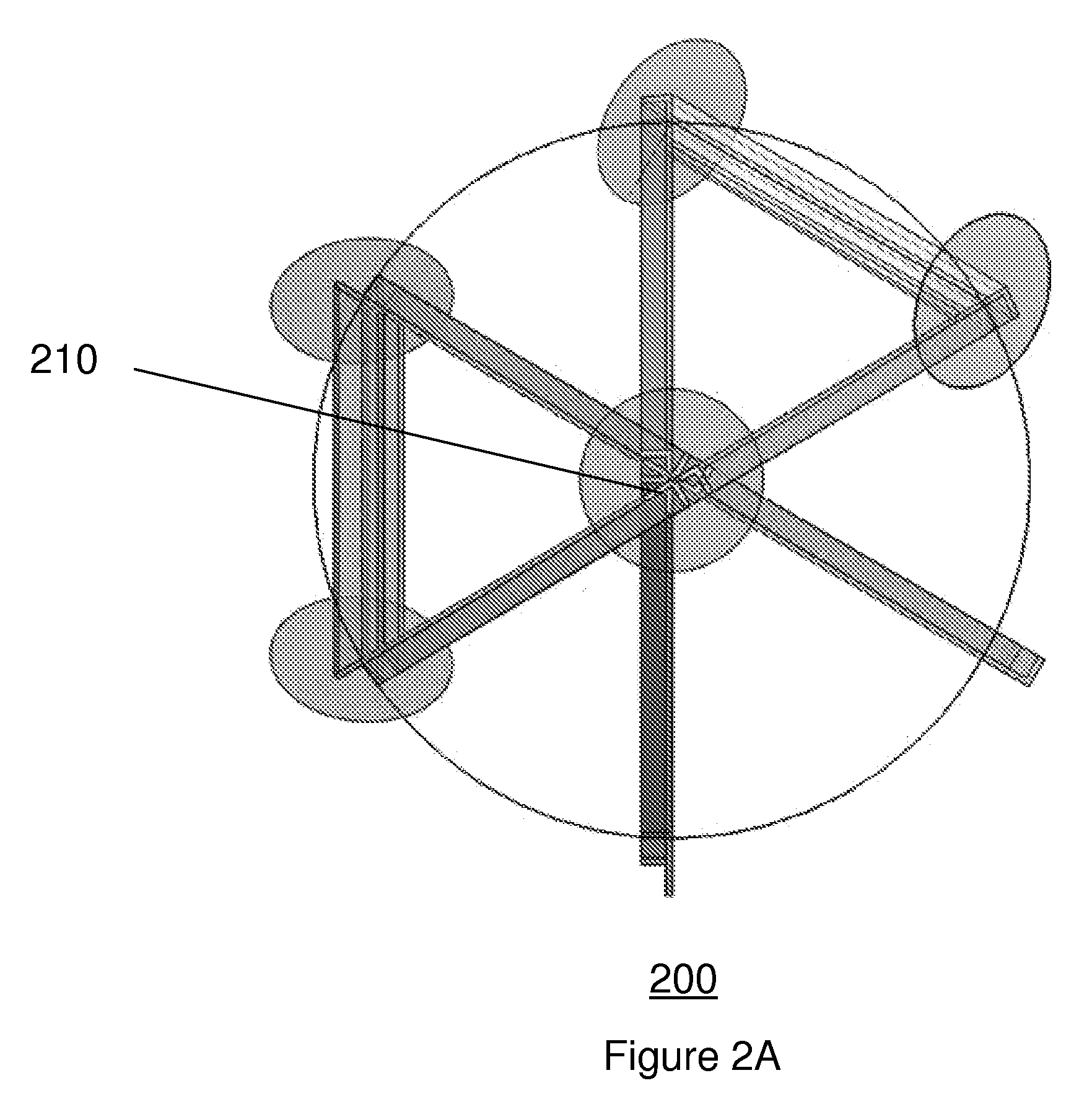Re-entrant structure for thin disk resonators
a resonator and thin disk technology, applied in the direction of optical resonator shape and construction, laser details, active medium shape and construction, etc., can solve the problems of reducing the saturated gain level of the resonator, and reducing the resonator's resonator's resonator's resonator, so as to reduce the buildup of wavefront errors and reduce the saturated gain level
- Summary
- Abstract
- Description
- Claims
- Application Information
AI Technical Summary
Benefits of technology
Problems solved by technology
Method used
Image
Examples
Embodiment Construction
[0028]The following description is presented to enable one of ordinary skill in the art to make and use the embodiment and is provided in the context of a patent application and its requirements. Various modifications to the implementations and the generic principles and features described herein will be readily apparent to those skilled in the art. Thus, the present embodiment is not intended to be limited to the implementations shown, but is to be accorded the widest scope consistent with the principles and features described herein.
[0029]In one implementation of the present embodiment, an intra-cavity reflector assembly employing pairs of dielectric reflecting mirrors to multipass the gain generator of a thin-disk laser while making use of symmetry to reduce reflected wavefront error, and producing polarized laser output is provided. Additionally, in a further aspect, in an implementation of the present embodiment, the gain disk may be rotated so that the fold plane-of-symmetry r...
PUM
 Login to View More
Login to View More Abstract
Description
Claims
Application Information
 Login to View More
Login to View More - R&D
- Intellectual Property
- Life Sciences
- Materials
- Tech Scout
- Unparalleled Data Quality
- Higher Quality Content
- 60% Fewer Hallucinations
Browse by: Latest US Patents, China's latest patents, Technical Efficacy Thesaurus, Application Domain, Technology Topic, Popular Technical Reports.
© 2025 PatSnap. All rights reserved.Legal|Privacy policy|Modern Slavery Act Transparency Statement|Sitemap|About US| Contact US: help@patsnap.com



